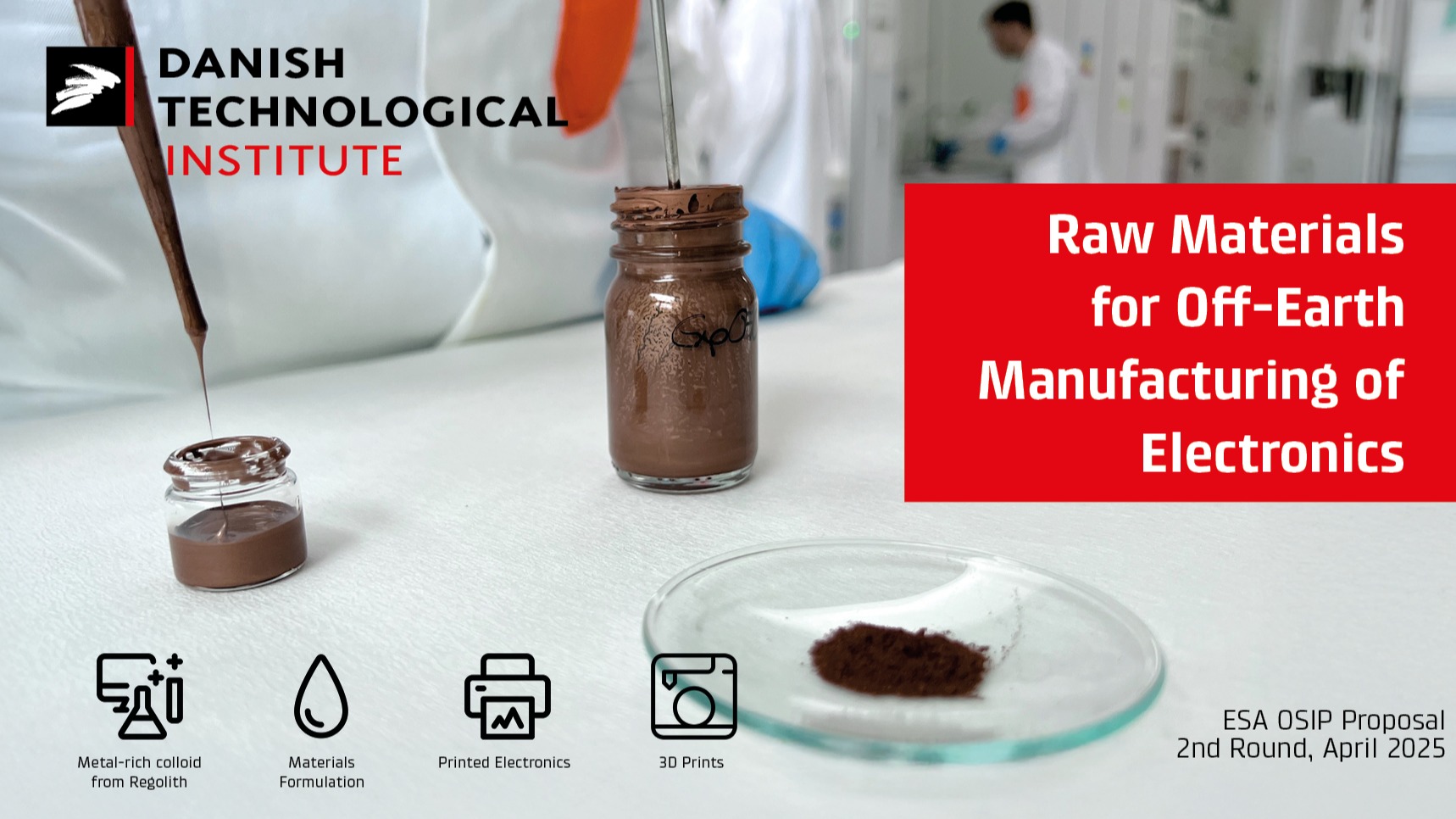Duration: 14 months
This project investigates the potential of in-situ resource utilization (ISRU) to produce conductive materials for additive manufacturing on the Moon and Mars. By leveraging molten salt electrolysis - a promising oxygen extraction method - we aim to transform the metallic byproducts of this process into functional inks and powders suitable for Additive Manufacturing (AM) of electronics in off-Earth environments.
Lunar regolith, which contains 40–45% oxygen by weight, can be processed to extract oxygen, leaving behind a metal-rich residue. Researchers, including Beth Lomax from the University of Glasgow, have demonstrated the feasibility of this method, and ESA has established a prototype oxygen plant to optimize the process.
The Danish Technological Institute (DTI) specializes in synthesizing conductive materials and through this activity, DTI will develop new approaches for AM electronics by converting the metallic fraction of regolith into digitally printable inks and fusible powders.
Key innovations include:
- Regolith Beneficiation: Improving the regolith composition for electrically conducting elements
- Conductive Ink and Powder Development: Tailoring the rheology and chemistry of the material and developing binders to suit off-Earth applications.
- Sintering: Designing laser or heat sintering techniques to process formulated inks into functional electrical systems using AM.
The initial goal of the project is to achieve a conductivity of 10e4 S/m for regolith-based AM electronics, even in worst-case scenarios where the material is dominated by titanium and iron grains. Prominent space actors have already shown strong interest in utilizing the ink and powders following completion of our activity. The ambitious vision is the production of electronics for space exploration using local resources, significantly reducing reliance on Earth-based supply chains, minimizing mission payloads, and enhancing mission resilience by enabling on-site repair and manufacturing.

